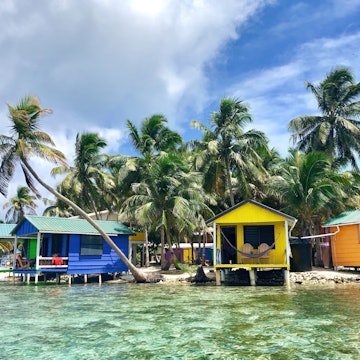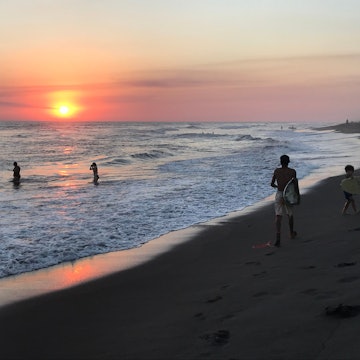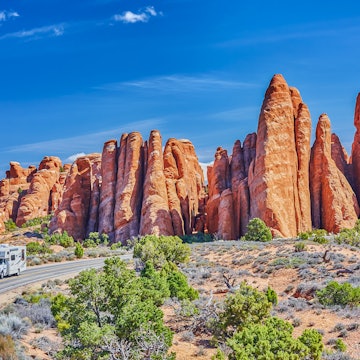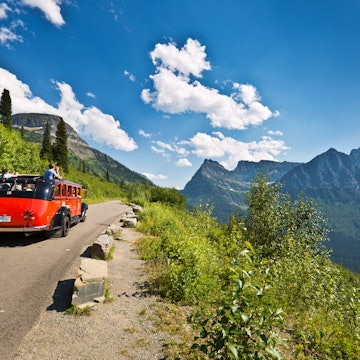
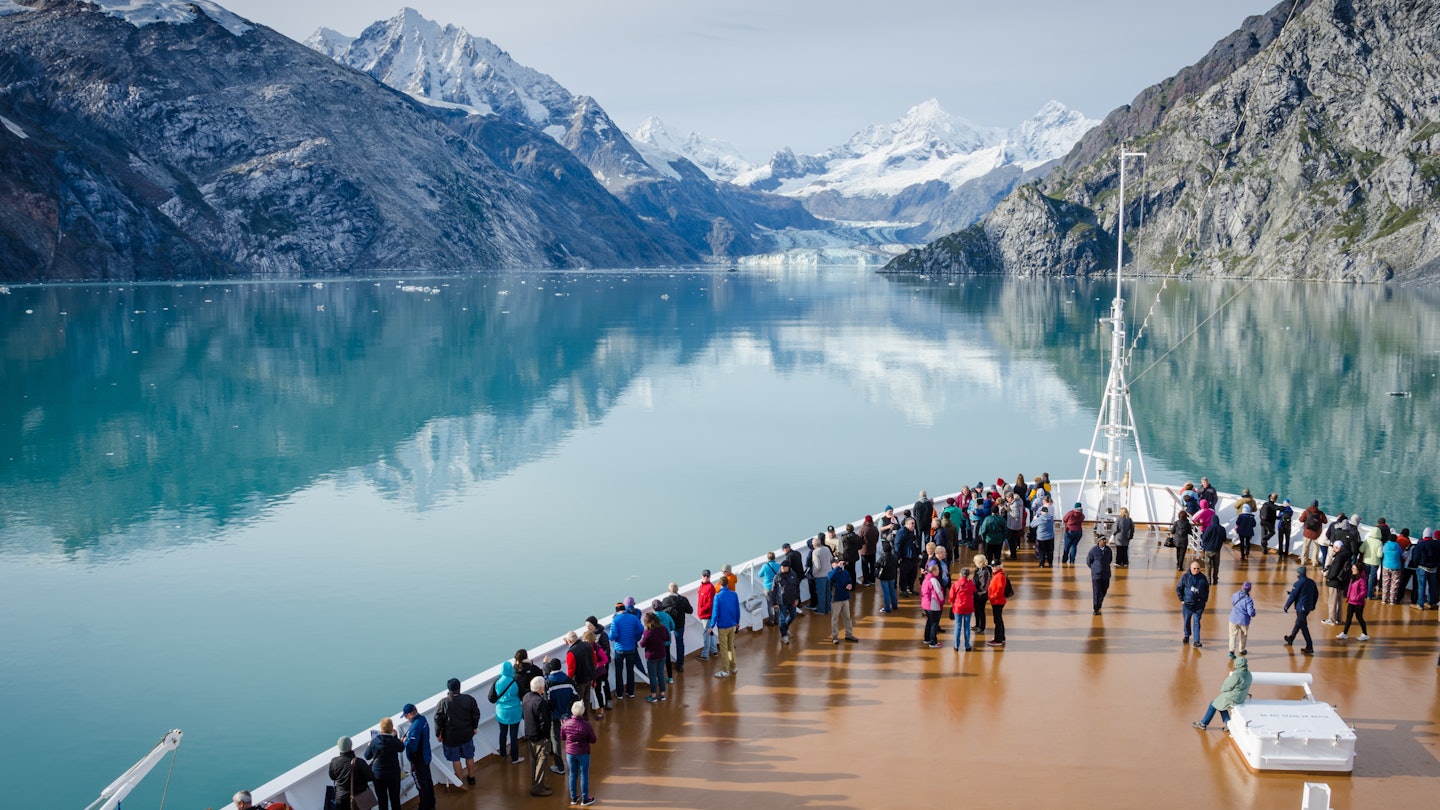
Taking to the water is a wonderful way to see Alaska's incredible coastline © Bala Sivakumar / Getty Images
Alaska's impressive southern coastlines contain beautiful and varied island archipelagos, deep fjords and ancient glaciers. Nearly all of the area is roadless, so seafaring vessels, including cruise ships, are a popular way for visitors to experience these pristine areas. There are Alaska cruises to suit every budget, preference and style. Read on to learn more about which Alaskan cruise is best for you.
Why go on a cruise?
A cruise offers a chance to glimpse a vast natural wilderness otherwise available only to rugged adventurists and those with the funds to afford expensive gear and transportation to hard-to-reach places. On an Alaska cruise, anyone can visit in relative comfort and convenience, with most one-way itineraries lasting a week rather than the months once required. Today’s larger cruise ships stop in at least three ports, at which activities await for an introduction into Alaska culture, recreation and history. Smaller vessels may stop in less-visited ports, or anchor at night to let guests hike a remote shoreline, whale-watch in a kayak or watch a presentation by indigenous artisans.
Cruising isn’t for every traveler; if you enjoy all-inclusive resorts and rigidly scheduled excursions, a typical cruise may be a good fit. If you like to explore on your own with few boundaries, you might be better off planning an independent itinerary.
Should I go on a large or small ship?
Large cruise companies sail Alaska's Inside Passage from Seattle, Washington and Vancouver, British Columbia, and on through the Gulf of Alaska to Seward or Whittier. This passage is excellent for an introduction to Alaska. In between, passengers usually stop in Ketchikan, Juneau and Skagway, and then sail up College Fjord to see glaciers stretching their icy fingers into the sea. You'll see plenty of stunning scenery along the way, but not up close. If you want to connect with this wondrous landscape, you need to get off the boat.
If you’re looking to maximize your time exploring along your chosen itinerary, consider a smaller ship. These ships max out at around 200 passengers and can nose into Southeast Alaska's nooks and crannies, launching skiffs and kayaks from their lower decks for an immersive shore visit full of exploration. These vessels may not stop directly in local ports. Instead, they typically anchor at night and offer guests the chance to hike a remote shoreline, enjoy whale-watching from a kayak or attend a presentation by indigenous artisans. If any ports are visited, they will likely be smaller communities like Wrangell, Sitka, Petersburg and Yakutat.
Additionally, with the Northwest Passage now open to marine traffic, the northwestern city of Nome is a regular port of call for higher-end, midsize cruise lines to expose passengers to the rural reaches of coastal Alaska. The Aleutian Island city of Unalaska is also on some boutique cruise line itineraries. This passage is a great option for travelers who want to see a different, less explored part of the state.

Which part of Alaska should I choose to cruise?
The best Alaskan cruise line is the one that best matches your interests and cruising style. Alaska is enormous, and it’s impossible to see its entire coastline unless you have a lot of time. Carefully review itineraries to ensure that all of your must-see destinations are included.
For an overview of Alaska
The Inside Passage cruise between Vancouver or Seattle and Seward or Whittier is the best way to enjoy a broad view of Alaska. These itineraries offer beautiful scenery and the chance to experience a route taken by steamships in the late 1800s. You’ll get a snapshot of the Tongass National Forest, Glacier Bay National Park and the occasional whale or bear, but not up close unless you’re on a specific shore excursion.
The best Alaska cruises expand typical Inside Passage scenic cruising by tacking on can’t-miss sights on land in Denali National Park, Fairbanks, Talkeetna and Anchorage. These generally combine Inside Passage cruising with a pre- or post-cruise land tour. Itineraries typically run 11-15 days, but more in-depth exploration can run for a month.
Cunard, Viking, Norwegian Cruise Line, Holland America Line, Princess Cruises and Royal Caribbean all offer combined land-and-sea itineraries on some of the best ships sailing Alaska. These larger ships tend to have access to centrally located piers and other conveniences while in port, minimizing the walking distance from dock to town, meeting points for excursion pickups and other amenities. However, none of these lines offer smaller ships, so keep that in mind if you want to explore off-the-beaten-path destinations from your boat.
Taking a deep dive into Alaska’s coastal regions
Book a small-ship cruise between Sitka, Ketchikan and Juneau for a week or longer in the small fjords and secluded bays of southeast Alaska. You’ll hike where there are no trails, paddle without another human in sight, and get to know the traditional lands of Alaska’s Coastal Native tribes. We like Alaskan Dream Cruises, UnCruise Adventures and Lindblad Expeditions’s smaller ships. Note that these itineraries generally do not include add-on land tour options.
Discover Alaska’s rich history
You can’t skip Ketchikan, Juneau or Skagway when getting to know Alaska. Juneau is the state capital and a former mining community. No trip to the city is complete without a visit to the Mendenhall Glacier. Ketchikan once was a major player in the timber industry and has a sordid past steeped in bootlegging and brothels. Skagway was a jumping-off point for the Klondike Gold Rush beyond Chilkoot Pass and has an old railroad to prove it. All three cities are often on large ship itineraries.
Explore Alaska’s most remote coastal areas
Consider a luxury midsize (or smaller) cruise to places like Dutch Harbor in the Aleutian Islands or the northwestern city of Nome, and explore part of the Northwest Passage. Both combine a look at the rugged, raw coastlines with time spent on shore in towns with few frills. Weather can often be cold, rainy and windy, but if you want an exciting adventure in Alaska, check out the itineraries from Hurtigruten or National Geographic.

When should I go?
Depending on the cruise line, the Alaska cruise season begins in late April and continues through early October. The best time to cruise Alaska depends on what you want to experience. The warmest and most dependable weather typically appears in July and August, but that's also the most popular (and expensive) time; pick a trip earlier or later in the season for cheaper passage and shore excursions.
For spring and fall passengers, know that temperatures will be cooler than you might expect and variable types of precipitation, including snow showers, aren't unusual. In the summer, it's surprisingly cool on deck and near glaciers, so don't expect a lot of outdoor pool time or sunbathing on board. This is especially true if you choose an itinerary that ventures farther north. Remember that cool temperatures and rainy weather can happen any time of year. If your Alaska plans include visiting Denali, note that the park doesn’t open until mid-May or later, depending on snow melt.
If spotting wildlife is a priority, consider cruising during the salmon runs from May to September, when bears are most active and can be spotted from the decks of the ship. Late May and early June are best for wildlife watching ashore, with opportunities to see mothers with calves or cubs. Late June to early July is prime bear season. Humpback whales often follow schools of herring and other small fish during the summer and can be seen anytime between May and September before they migrate to Hawaii or Mexico.
How do I know my cruise line is operating sustainably?
While all travel has environmental and cultural impacts, cruising leaves its mark on Alaska's fragile ecosystems to varying degrees. The average large cruise ship can have a carbon footprint greater than 12,000 cars and produce up to a ton of trash each day. While there can be a positive economic impact on ports of call, a small community visited by 15,000 people per day during sailing season can intrinsically change.
What you can do
Reduce use of single-use plastics by packing your own water bottle and refilling on board; and bring reusable shopping bags for port visits.
Ask about recycling stations on board, and look for locations in the communities you visit.
Read up on the impacts of climate change on Alaska’s sensitive environments, where glacial melt, coastal erosion and a loss of permafrost present real-time issues to wilderness, ocean and communities around the state.

What kinds of activities can we experience?
Onshore activities differ depending on the size and style of the cruise. Traditional excursions are created to fit a specific number of people, all of whom come from the ships and are expected to be in port for a specific time. They provide an overview of Alaska's history, culture, recreation and industry, and don't offer much of a personal touch but can serve as a good introduction.
Smaller boutique cruises strive to immerse their guests in the wild Alaska they've researched and desire to experience. Trips to shore rarely involve large port cities except for embarking and disembarking – instead, they drop kayaks in the water from the ship or use a rubber skiff to reach a deserted shoreline for a hike. The communities they visit are usually smaller, like Petersburg, Wrangell or Haines.
Glacier & wildlife tours: Cruise for a few hours aboard a smaller vessel for whale-watching and spotting otters, bald eagles, seals and calving glaciers. Go fishing for salmon.
Dog-sledding: Learn about mushing, huskies and the operations of sled-dog kennels before taking a spin behind a team.
ATV adventuring: Rev up for a wilderness or tundra tour aboard a four-wheeler or side-by-side vehicle.
Flightseeing: Take a peek at Alaska's landscapes from above and look for wildlife, glaciers and mountain ranges. Fly-by destinations include Denali Peak and Gates of the Arctic National Park & Preserve, which takes passengers above the Arctic Circle.
Alaska Native traditions: Learn the ways of Alaska's many tribal groups, with dancing, drumming and art displays as part of the program.
Ride a historic train: Skagway's White Pass Yukon Railroad climbs over Chilkoot Pass for a hands-on gold-rush history tour.
Paddle power: Hop in a raft or kayak and explore Alaska's beautiful coastlines and rivers.
Need-to-know before you go
Plan for wet weather
Alaska’s southeastern region is part of a rainforest, where wet conditions are the norm even in summer. Northern Alaska, including Denali, Fairbanks and Nome, is generally cool, with the possibility of snow in higher elevations year-round. No matter where you go in Alaska, bring waterproof rain gear, a coat or warm layers, sturdy shoes, a hat and gloves to stay warm and dry.
Know your physical limits
If mobility or other health issues may affect your ability to enjoy a cruise to the fullest, consider traveling with a larger operator. These companies are well-versed in accessibility and have made accommodations for those with mobility needs. Smaller ships have trip hazards and tighter spaces, requiring bending and stepping up or down to access activities like kayaking or skiff rides.
Plan your own shoreside activities
There is no requirement to book shore excursions or activities through the cruise line, though that is often the most convenient way. If a more independent style of exploration is your thing, feel free to do your own research ahead of time or visit each port of call’s visitor bureau upon arrival.
Check how much time you have in port, stop by the visitor center for a map (often, representatives are at the disembarkation point), and be on your way. Or, consider unaffiliated travel companies with the infrastructure and capacity to cater to cruise passengers, such as ToursByLocals. Make sure you’re back on board at least 30 minutes before the ship is due to depart, and ask about exact times with tour operators to avoid being left behind at your own expense.
Note: Book early! Due to the short peak season, spots on popular tours ashore sell out well in advance.
Look to shoulder season sailings
Not only will you often receive a significant discount, but you’ll also be able to witness Alaska’s seasonal transitions and fewer crowds at ports of call. Shoulder season also brings the best chance of seeing the Northern Lights, though this is usually only possible in northern latitudes during shorter days. With cooler temperatures, it may not be comfortable to spend hours on deck watching the scenery. Consider cabins with windows or a balcony over inside accommodation to ensure you don’t miss out on any views.
Know what "all-inclusive" really means
Drill down into the details of your cruise and ask questions about meals, alcoholic beverages, activities and shore trips. It may be that a smaller and higher-end cruise line will include everything at one price.
Ensure a smooth arrival and departure: US citizens transiting through Vancouver for their cruise should ensure they have a passport and other required documentation that meet entry and exit requirements.









